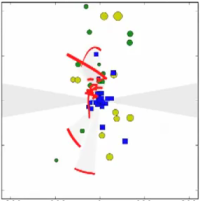A special issue from Nature: Peopling the planet.
A special issue from Nature: Peopling the planet.
I haven’t yet had time to read this special issue, but it will certainly be fascinating, as it apparently summarizes the most current knowledge scientists have about the manner and timing of the human migration of the entire surface of the Earth. Overall, it appears that this migration took place sooner and faster than previously believed. Definitely worth a read.
A special issue from Nature: Peopling the planet.
I haven’t yet had time to read this special issue, but it will certainly be fascinating, as it apparently summarizes the most current knowledge scientists have about the manner and timing of the human migration of the entire surface of the Earth. Overall, it appears that this migration took place sooner and faster than previously believed. Definitely worth a read.

